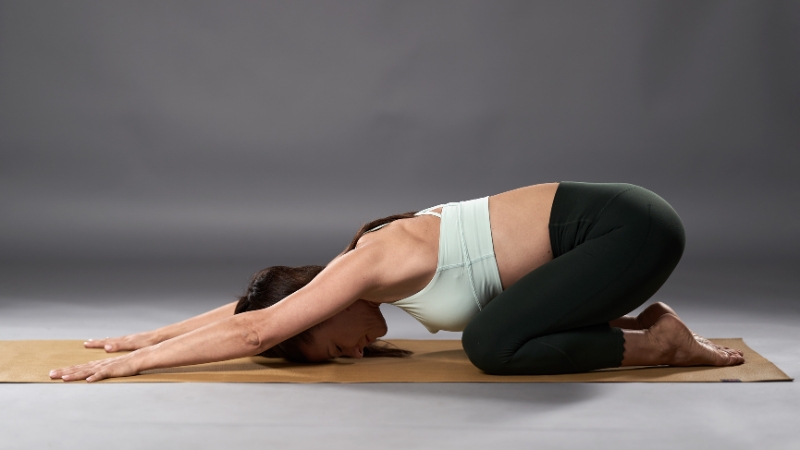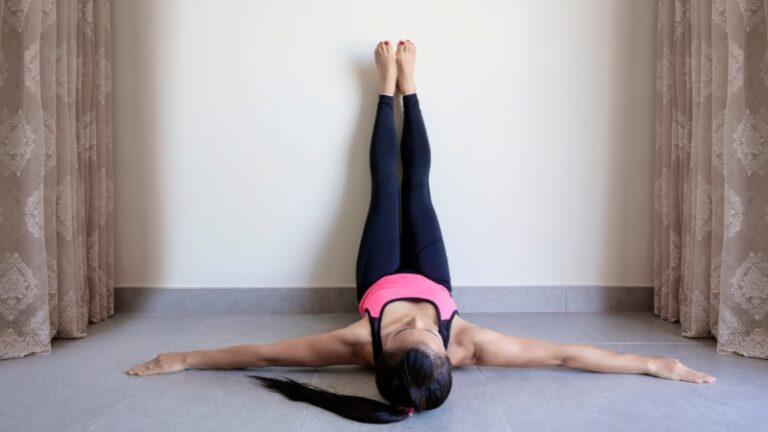The lymphatic system is one of the most important yet often overlooked parts of our body.
Unlike blood circulation, which has the heart to pump it around, lymph relies on muscle movement, breath, and posture to flow. When lymph stagnates, it can lead to swelling, puffiness, fatigue, and even weakened immunity.
This is where lymphatic yoga comes in. It is not a new style of yoga with strict rules but rather a set of practices designed to stimulate lymph flow through gentle movement, deep breathing, and specific postures.
The concrete answer is this: lymphatic yoga uses carefully chosen poses and breathing exercises to encourage drainage of toxins and excess fluid, reduce inflammation, and strengthen the body’s natural defense system.
For people dealing with bloating, water retention, or low energy, it offers a natural way to support health without relying solely on medical or cosmetic treatments.
Benefits of Lymphatic Yoga
Lymphatic yoga is more than just a gentle stretch routine. It directly supports the body’s natural cleansing system, helping to remove waste, boost immunity, and restore balance.
The benefits go far beyond flexibility and can be felt in your daily energy levels, skin health, and overall sense of lightness. Here’s what regular practice can do for you:
1. Reduces Puffiness and Water Retention
Many people struggle with swelling in the ankles, legs, or even puffiness around the face, especially after long periods of sitting or standing. Lymphatic yoga uses gentle inversions, like putting your legs up the wall, and twisting postures that encourage fluids to drain more effectively back into circulation.
This not only relieves heaviness in the body but also helps you look and feel less bloated. With consistent practice, fluid balance becomes easier to maintain, leaving you more comfortable throughout the day.
2. Boosts Immunity
Boost Immunity with #YogaInversions: To prime your body for #winter health, try this gentle sequence designed to support the lymphatic system. https://t.co/kwSB94kjbA pic.twitter.com/x7RqmKAcMZ
— Yoga Journal (@Yoga_Journal) February 17, 2018
The lymphatic system is one of the body’s primary defense networks, moving white blood cells to where they are needed most. When lymph flow is sluggish, your immune response can also slow down.
Lymphatic yoga improves this circulation, ensuring immune cells travel more freely through the body.
By activating natural drainage pathways, yoga strengthens your ability to fight off infections and recover from everyday stressors, making it a simple but powerful way to support long-term wellness.
3. Improves Energy and Reduces Fatigue
When lymph stagnates, waste products build up, and you can feel weighed down and tired. That sluggish, heavy sensation is often linked to poor lymph circulation.
The combination of movement, stretching, and deep diaphragmatic breathing in yoga helps pump lymph fluid back into circulation, clearing out cellular waste and refreshing the body.
Many people notice that even a short lymphatic yoga session can leave them feeling lighter and more energized, without the jittery boost of caffeine.
4. Supports Detoxification
Detox is not just about diets or juice cleanses; the body naturally eliminates toxins through the liver, kidneys, skin, and lymphatic system. Yoga enhances this process by opening blockages, encouraging better circulation, and promoting gentle sweating.
Poses that compress and release the abdomen, such as twists, act like a massage for internal organs, supporting the body’s natural detox pathways. Over time, this consistent support helps reduce inflammation and promotes clearer skin, better digestion, and an overall sense of balance.
5. Enhances Recovery

Whether you’re an athlete with sore muscles or someone recovering from illness, lymphatic yoga can speed up the healing process. Inflammation is a natural response to stress or injury, but if it lingers too long, it can delay recovery.
Yoga’s calming, restorative movements reduce inflammation and encourage healthy tissue repair. By increasing circulation and lowering stress levels, lymphatic yoga creates the conditions for faster and more complete recovery, helping you get back to your routine with less downtime.
Best Lymphatic Yoga Poses
Not every yoga pose has the same effect on lymph flow. The most effective are those that involve inversions, twists, and rhythmic movement, all of which naturally support drainage.
Pose
How It Works
Benefits
Suggested Time
Viparita Karani (Legs-Up-the-Wall Pose)
Uses gravity to drain fluid from legs back to core.
Reduces swelling in legs/feet, relieves heaviness, calms the nervous system.
5–10 minutes
Supta Matsyendrasana (Supine Spinal Twist)
Compresses and releases lymph nodes in the abdomen.
Improves lymph flow, aids digestion, and relaxes the spine.
1–2 minutes each side
Cat-Cow Stretch (Marjaryasana-Bitilasana)
Dynamic spinal movement massages lymph nodes along the chest and neck.
Improves circulation, relieves tension, stimulates fluid movement.
1–2 minutes
Bridge Pose (Setu Bandhasana)
Gentle inversion opens the chest and abdomen.
Stimulates lymph in the groin and chest, boosts circulation.
30–60 seconds
Child’s Pose (Balasana)
Resting posture that compresses the abdomen and supports diaphragmatic breathing.
Encourages lymph drainage in the abdominal area, relieves stress.
2–3 minutes
Breathing for Lymphatic Drainage
Breath is just as important as movement in lymphatic yoga. Deep belly breathing creates a pumping effect in the diaphragm, which presses on the largest lymphatic vessel, the thoracic duct, helping lymph flow back into circulation.
A simple technique:
Doing this before or after your yoga poses can dramatically enhance results.
How to Start Practicing Lymphatic Yoga
View this post on Instagram
The best part about lymphatic yoga is that you don’t need a long or complicated routine. Even 10–15 minutes daily can make a big difference, much like how an online card maker lets you send a thoughtful birthday card in minutes without the hassle of buying and mailing a physical card.
- Start small: Begin with one or two poses like Legs-Up-the-Wall and Cat-Cow.
- Be consistent: The lymphatic system responds better to regular, gentle movement than to occasional intense effort.
- Combine with hydration: Drinking enough water is essential for lymph flow. Herbal teas like ginger or dandelion root can provide added support.
- Add self-massage: Light lymphatic massage on the neck and collarbone area before practice can help open drainage pathways.
- Listen to your body: If you feel dizzy or uncomfortable in inversions, choose gentler poses and build up gradually.
A Sample 15-Minute Lymphatic Yoga Flow
Here’s a beginner-friendly sequence you can try at home:
This simple flow combines movement, twists, inversions, and breathwork to fully activate the lymphatic system.
Bottom Line
@yoga.cloud 15 minute routine to encourage lymphatic flow and joint health. Sometimes I’ll do this routine following part 1, or it can be a nice warm up on its own. #yoga #yogaroutine #lymphaticflow #morningroutine #yogaflow ♬ Two Weeks – Grizzly Bear
Lymphatic yoga is not a trend; it’s a practical way to support one of the body’s most important systems. By combining gentle yoga poses, breathing techniques, and mindful relaxation, you can reduce puffiness, improve immunity, and restore natural energy levels.
It’s accessible to all ages and fitness levels, requires no special equipment, and only takes a few minutes a day. Whether you’re looking to ease swelling, recover faster, or simply feel lighter, lymphatic yoga offers a natural solution that works with your body’s own healing processes.

